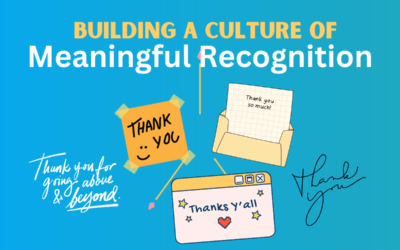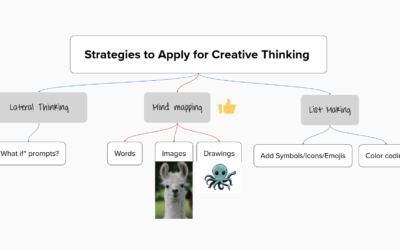 Nonprofits are at a turning point. The ability to track how we use resources and how we produce impact (not just outputs) for our missions has become accessible for most nonprofits. The question is no longer, “Can we reasonably afford the technology tools that correlate resources to demonstrated impact?” That question is increasingly an affirmative as these tools for nonprofits become more affordable. The question now is, “How are we going to use that correlated data to demonstrate impact and get funded before some other nonprofit does a better job at it and gets funded instead of us?
Nonprofits are at a turning point. The ability to track how we use resources and how we produce impact (not just outputs) for our missions has become accessible for most nonprofits. The question is no longer, “Can we reasonably afford the technology tools that correlate resources to demonstrated impact?” That question is increasingly an affirmative as these tools for nonprofits become more affordable. The question now is, “How are we going to use that correlated data to demonstrate impact and get funded before some other nonprofit does a better job at it and gets funded instead of us?
There is an explicit bargain in the creation of a nonprofit organization. The charity agrees to meet a need which business and government can’t (or won’t) meet. In exchange for leaping into the breach, we are granted exemption from most taxation. That exemption, however, doesn’t come without some significant accountabilities. Nonprofits must demonstrate stewardship over tax-exempt resources and results in our missions. Failing on either task almost certainly mean loss of gifted income, and our donated revenue is the critical component of almost every charitable cause.
The history of both accountabilities is built on good intentions. As long as no serious misdeeds were done and the outputs looked generally sensible, many nonprofit efforts were able to sustain the funding and support needed to keep serving their communities. Data collection and supportable program evaluation were prohibitively expensive in many cases, at least way back in the 20th century. It didn’t make sense to put more energy into budget plans and theories of change than into the services we were delivering. Let’s remember that these were the days when a personal computer might run two or three months starting wages, and data storage and processing – seemingly so fast and promising then – were quite primitive compared to what is available for practically free today.
Old-School Budget Management
Nonprofit budgets have always been a plan for how we would use resources to achieve outcomes, but this part of the bargain was implicit in the days of yore (say, 15 years ago). We promised certain outputs in grant applications, and general types of work in our annual solicitations. If we failed to meet those output numbers, our reports always gave reasoned explanations of why the circumstances changed. Most of the time that was the end of the conversation about linking resources to outcomes. Other parts of the budget received more scrutiny – like salary costs (shouldn’t nonprofit people work for less? can’t you get a better deal?).
Our supporters didn’t demand a more rigorous connection to the outcomes of our mission because data was hard to track and manage. Segregating the impact of our work from other external factors was just too difficult over the long run.
New-School Budget Accountability
This began to change in the last decade with many nonprofit funders shifting away from general operating support and toward fee-for-service reimbursement. This has become particularly emblematic of government support. A general grant for general work has become very difficult to find with resources tightened across (post-recession) philanthropy and government. It’s now more commonplace in government support to see reimbursement for approved costs against a set number of outputs, up to some maximum. A government “grant” is now more likely to be something like “up to $75,000, reimbursed at a rate of $50 per child per session after documentation is submitted, maximum of [insert arbitrary number here] percent for administrative costs.”
Many nonprofits are happy to accept this if the choice is reimbursement of outputs versus no money at all. It’s not just government partners who are looking for accountability, but not all of us are able to prove outcomes yet. Smart nonprofits are incorporating tools and methodologies to report impact before it becomes an absolute requirement, which means we can pick the path toward outcomes that matters to us.

The image above (from W.K. Kellogg Foundation Logic Model Development Guide) indicates that outputs are a mid-point on the path to demonstrating impact. Most nonprofit organizations are advancing quickly toward being able to report on impact. The rest are in peril of losing funding or fruitlessly seeking funding without the requisite documentation demonstrating mission success.
A Master Story Teller
Art Rolnick was working for the Federal Reserve Bank when he backed into the idea of a return on investment (ROI) calculation for early childhood education. An economist by training, Rolnick became convinced that if nonprofit organizations accounted for the long-term impact of their work — reduced poverty, improved tax collection from better employment, etc.– they could calculate the return on investment for the budget dollars spent on early childhood education. The number he reached: 16% annual rate of return, adjusted for inflation. Sure, someone had to pay teachers and aides and even the overhead costs like insurance and audits – but when that was done, that money would come back at a rate that beats the best index funds on Wall Street. Rolnick tells the story best in this TEDx talk.
The ability to deliver solid impact data, reframes funder questions from, “What does a ream of paper cost?” to, “Can we afford to lose an investment that brings in 16% every year?”
“Proving” Social and Economic Impact
Not every individual organization is going to demonstrate outcomes with huge financial impact. If only we could aggregate all the positive changes in the world brought about by thousands of small nonprofits…surely then we could prove financial impact!
Some organizations alleviate suffering or create art and may not have a specifically identifiable financial return. Linking our inputs – our budgets – to specific outcomes and impacts is a matter of showing our supporters that we use resources better than anyone else toward our mission work.
- Our nonprofit is a great investment because we provide more engagement with art per-dollar-invested than anyone else you know.
- Our nonprofit gets more meals to more people needing food than anyone else for that investment.
Whatever your long-term impact may be, with modern case management and data management software designed specifically for nonprofits, you can now gather the data and link it to your budget. Outcomes and Impact reporting are getting better and better. More comparative information is available to funders than ever before which means our evidence has to be that much more convincing!
Now that there are affordable and reliable solutions for data collection based on the work we do – case management, fundraising, grant management, it’s time to start pairing them with the accounting systems that track the financial resources used to produce those outputs. Our budgets may have started out with an old Excel template that has been floating around the office since the days of Windows 95, but that doesn’t mean they have to end there. Once the basic questions of accounting for all the inputs are answered (including such things as in-kind gifts which are far too often left out of budgets), they need to be connected to specific outputs.
In today’s economy, nonprofit organizations that can demonstrate stronger returns with stronger investments – and can communicate the argument with compelling data – are more likely to get the resources they need to accomplish mission success.
Originally published at Community TechKnowledge




